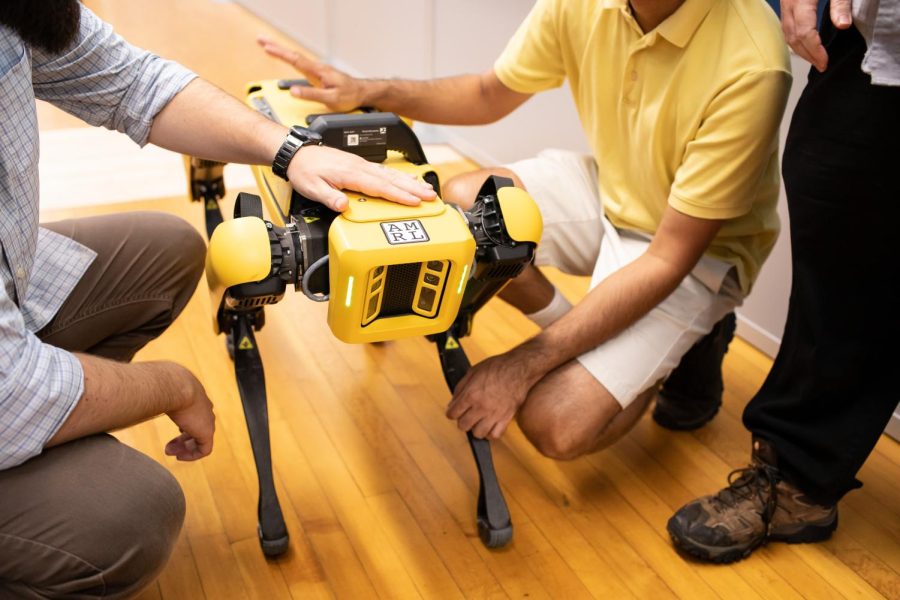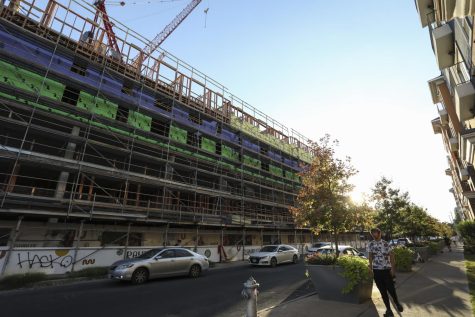Robot dogs to roam campus as part of a UT research project
October 27, 2022
While some students have seen the albino squirrels around campus, all students will have the opportunity to see robot dogs on the Forty Acres in upcoming years.
Scheduled to begin early next year, the UT campus will soon be filled with autonomous robot dogs roaming around campus, collecting data for the Living and Working with Robots project in association with Good Systems. The $3.6 million, five-year research project, funded by the National Science Foundation, aims to look at robot interactions with humans through several different lenses and in different environments, such as in the household, on the street or in the library, said Stephanie Menhart, an organizational communication and technology doctoral student working on the project.
“We want to understand the way that people are looking at robots in an interaction with them as they might be encountering them,” Menhart said. “Imagine a future where we have robots running around, doing all kinds of things with us.”
The program was shaped from a previous project, Short and Medium Range Autonomous Delivery Systems, which was adapted to include more interdisciplinary aspects after the pandemic, said Elliott Hauser, assistant professor at the School of Information and researcher on the project.
“I found that the colleagues already involved with that SMADS pilot project were very open to involving researchers that use social methods of research, and understood that their deep expertise didn’t necessarily include what you would need to understand people as groups,” Hauser said. “The conversation evolved. They let me bring some other social methods of trained people into the conversation.”
The program includes nine faculty from various fields of interest, such as the School of Architecture. Researchers hope to move beyond just a testbed for engineering and toward a social observatory component, Hauser said.
Menhart said it is important for the project to include experts from a variety of different fields to encapsulate a more accurate representation of how artificial intelligence would fit in our daily lives.
“If you want to really understand the kind of implications and the outcome of what a future with AI looks like, then you have to look at it across the board, or you’re just not going to get the full picture,” Menhart said.
The project hopes to provide insight on how to integrate robots into daily human life while retaining ethical obligations, said Luis Sentis, principal investigator of the project and an aerospace engineering and mechanics professor.
“We think about what kind of studies and what different domains they need to happen … to make sure that there’s a future where companies and organizations deploy these systems, they do it in a way that is really serving the needs of the communities they operate in,” Sentis said.









